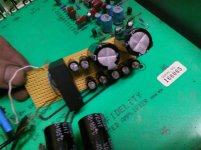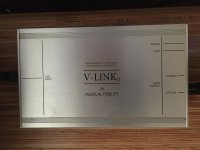Steve Clarke ? he's only got half a drum kit, check out Neil Peart. My favourite drummer would be Bill Ward but they only figured out how to record them by Iron man. Ian Paice isn't bad either. I think there's some well recorded drums on "They only come out at night" by Edgar Winter, also decent drumming on" Fyah" by Theon Cross. Generally heavy metal has decent drumming. Have you ever noticed a lot of early rock bands were a blues band with a jazz drummer ?
I’ve always been a jazz guy, so yes, I’ve always been aware of the rock drummers who grew up idolizing jazz drummers. Neil Peart being one of more famous examples. You could say that all greatest rock drummers were that way
I have always looked at constrained layer damping as something analogous to a car being driven on a bumpy road. You have a rigid object(the car), the low frequency absorber(the shocks), the higher frequency absorber(the air filled rubber tires) followed by a rigid substrate(the road). The shocks that are used need to be tuned to the weight of the car(among other things) and the tires need to be filled with air based the weight of the car(among other things), to make the ride as smooth as possible. In the case of the baffle, the way I’ve tuned it is by tightening the four mounting bolts by varying degrees, knocking on it, tightening again and knocking again. It’s very easy to hear the changes in the sound on the baffle while doing this. When it makes the dullest thud, The ride(car analogy)will be as smooth as possible. Sorbothane works best with up to 20% compression. No compression and it hardly works at all, relatively speaking.
So you have the driver(Haha) the top plate of the baffle(car), the compressed sorbothane(tuned shock absorbers), and the bottom baffle plate attached to the cabinet(the road). What’s funny, is that I even gave the drivers genuine leather seats for their bums to sit on🙂
So you have the driver(Haha) the top plate of the baffle(car), the compressed sorbothane(tuned shock absorbers), and the bottom baffle plate attached to the cabinet(the road). What’s funny, is that I even gave the drivers genuine leather seats for their bums to sit on🙂
Last edited:
The main problem I have with this video, is that the sorbothane testing sample does not use sorbothane with it's required 10% to 20% compression. He simply has it free floatining between the two panels. It would have most likely destroyed the other method if it was compressed(In other words, tuned, like a car's shock absorber under it's required weight)
Constrained layer damping | Audio Science Review (ASR) Forum
Constrained layer damping | Audio Science Review (ASR) Forum
Last edited:
Do you find they still sound good at very low volume ? This is something I found with my biab speakers. I think the box warmth blurs transients and detail so you have to crank it up to compensate, with very low colouration speakers and class d you just hear everything, even at 50db. On the Steve Clarke track there's a lovely " boing " to some of the drums.
Yes, my standard listening method is near field and at low volume. Micro detail and soundstage depth are extraordinary, and so is the overall musicality. I do have experience with the same drivers mounted on a one inch thick MDF baffle on the same cabinet(And crossovers) with a typical amount of wool batting inside and I wasn't very impressed. That's why I wasn't using them. I knew they had very high objective performance, so I felt that this project was the perfect opportunity to give them another chance, and it has totally paid off(So far🙂). There is just no substitute for living with something a longer period of time for getting a firmer grasp on its gestalt.
Last edited:
"Low volume" is a relative term. Typically I listen at around 75 to 80db at the listening seat. I rarely exceed 90db on music(With the exception of the drum solo the other night🙂). Streaming movies is a different matter though. The dynamic range on some can be extraordinarily wide. Especially with action movies. Another thing I'm noticing from these speakers is that they have pristine speech intelligibility
Last edited:
How do you guys measure your listening levels? Using REW's I get around 85 dB(A) SPL, and up to 105 dB(A) Peaks at my maximum preferred listening level with the umic placed at seating position.
My current speaker cabinets produce a significant amount of distortion when measuring above 100db. Very audible vibrations. For the best possible experience, shouldn't the system be able to play cleanly up to the maximum peaks? Have you tried measuring your speakers at the peak volume level they will play back?
My current speaker cabinets produce a significant amount of distortion when measuring above 100db. Very audible vibrations. For the best possible experience, shouldn't the system be able to play cleanly up to the maximum peaks? Have you tried measuring your speakers at the peak volume level they will play back?
90 db average at 50" with the following distortion..
https://www.diyaudio.com/forums/att...adener-density-acoustic-system-distortion-jpg
I have more than 500 watts on tap for each stereo channel, but the icepower amps are the weak link. Each mid and tweet is getting 25 watts. That's more than enough for the efficient tweeters(92db), but the mid's are relatively inefficient(86db). The drum solo track I played the other night handled dynamic peaks of over (Most likely)100db with total clarity.
I measure listening levels at the listening position with a calibrated MINI-DSP U-MIC 1 while typical music is playing.
I should have gone with the next power up(50 watts into 8ohms) when I bought the ICEpower modules
https://www.diyaudio.com/forums/att...adener-density-acoustic-system-distortion-jpg
I have more than 500 watts on tap for each stereo channel, but the icepower amps are the weak link. Each mid and tweet is getting 25 watts. That's more than enough for the efficient tweeters(92db), but the mid's are relatively inefficient(86db). The drum solo track I played the other night handled dynamic peaks of over (Most likely)100db with total clarity.
I measure listening levels at the listening position with a calibrated MINI-DSP U-MIC 1 while typical music is playing.
I should have gone with the next power up(50 watts into 8ohms) when I bought the ICEpower modules
Last edited:
ICEpower 50ASX2BTL Class D Audio Amplifier with Power Supply Module 1 x 170W
I hate weak links, so this may be my next investment. I would need two(They're mono, and would only be used on the mids), with one more case from Ghent. It's actually 85 watts into 8ohms, a little more than 3 times more power than I have. That's around 4.5 or 5 db more headroom. Worth it? Maybe.
I hate weak links, so this may be my next investment. I would need two(They're mono, and would only be used on the mids), with one more case from Ghent. It's actually 85 watts into 8ohms, a little more than 3 times more power than I have. That's around 4.5 or 5 db more headroom. Worth it? Maybe.
Last edited:
I presume that the four 470 uf capacitors on the 50ASX2BTL are for the power supply, 1,800 uf doesn't seem much. Because you now have speakers that reproduce transients so well, is the stiffness on the power supply become more relevant, more so than for the speakers the developers of ICEpower would have used. Perhaps going active and having the ICE powers mounted on the back of your speakers would reap benefits. I'm just using a Dolla tek Breeze on 18v but I might make my own using a cheep chi fi class D board with LOTS of capacitors and upgraded output chokes.
I also have a 50 watt(at 8ohms) per channel Conrad Johnson tube amplifier in storage, but I need to do a power supply capacitor upgrade. The original electrolytic caps are now 35 years old, which is never a good thing. It would only be used on the mids if I did, which is where it excels. The CJ would also need new tubes, and maybe a few other upgrades as well. Would be fun to measure the midrange driver 2nd order distortion output with the CJ amp engaged vs the same with the ICEpower amp. Great sounding class d amps like ICEpower and Hypex Ncore are so convenient and green though. Tube amps are such a pain in the effing *** in comparison🙂.
Last edited:
Just purchased a Bluetooth accelerometer to be used with my windows 10 played through my 65" monitor. I'll see if I can get any useful cabinet and baffle measurements with the midrange(200hz to 2khz) playing pink noise at varying volumes. I'll do sweeps too. I will also be trying it on my bass cabinets.
[Bluetooth Accelerometer+Inclinometer] BWT901CL MPU9250 High-Precision 9-axis Gyroscope+Angle(XY 0.05deg Accuracy)+Magnetometer with Kalman Filter, 200Hz High-Stability 3-axis IMU Sensor for Arduino: Amazon.com: Industrial & Scientific
[Bluetooth Accelerometer+Inclinometer] BWT901CL MPU9250 High-Precision 9-axis Gyroscope+Angle(XY 0.05deg Accuracy)+Magnetometer with Kalman Filter, 200Hz High-Stability 3-axis IMU Sensor for Arduino: Amazon.com: Industrial & Scientific
Last edited:
I'm currently using some really cheap speakers to test it, it's unbelievable how boxy they sound. I usually rest a hand against speakers to feel for vibration, but it's not very scientific.
the icepower modules are very well documented. As long as you choose the right module for the application, you shouldn't be concerned about the size of the capacitors. Either two of those bridged 50asx2BTL or one 125asx2 should be enough to comfortably drive those mid ranges to well above 100db continuous. Then you don't have to worry about not enough power for transients.
Based on my calculations, the 86db1w/m 8ohm mid needs about 32 clean watts to hit 101db, so the 25 watts 125asx2 output into 8ohms won't hit the mark, but the bridged 50asx2btl will do about 105db with the same driver.
125asx2 should do more then 50w before distortion rises. I have attached a link to the datasheet.
https://www.google.com/url?sa=t&sou...DMAJ6BAgUEAY&usg=AOvVaw0czIObTtuU-p-fBxYCp6i_
https://www.google.com/url?sa=t&sou...DMAJ6BAgUEAY&usg=AOvVaw0czIObTtuU-p-fBxYCp6i_
- Home
- Loudspeakers
- Multi-Way
- Midrange experiment with Auto sound panel deadener and high density acoustic felt..


